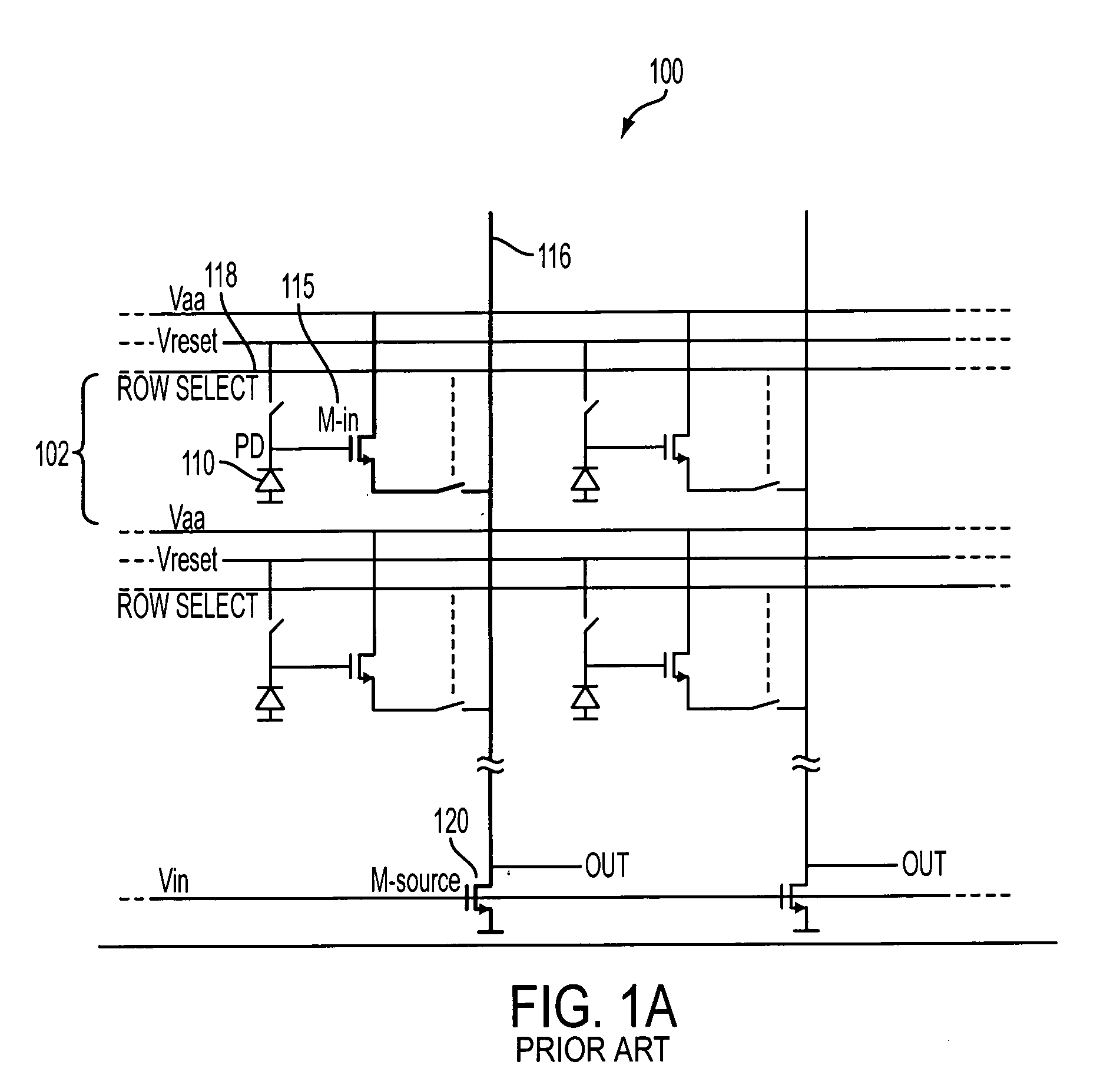Amplification with feedback capacitance for photodetector signals
a photodetector and feedback capacitance technology, applied in the field of imager circuits, can solve the problems of limited output voltage swing and linearity of source follower amplifiers, limited output voltage swing on the downward side of the output voltage swing,
- Summary
- Abstract
- Description
- Claims
- Application Information
AI Technical Summary
Benefits of technology
Problems solved by technology
Method used
Image
Examples
Embodiment Construction
[0031] The present invention provides techniques that may be used in commercial applications of image sensors. Exemplary applications include monolithic visible image sensors and a variety of hybrid infrared focal plane arrays and stacked structure visible sensors.
[0032] As used herein, the term “capacitive transimpedance amplifier” or “CTIA” includes any amplifying circuitry in which there is a capacitive feedback path unless otherwise specified. In a simple example, a capacitive element could be connected between the signal input and signal output leads of amplifying circuitry, but various other configurations can be implemented, such as with a primary capacitive element and an additional capacitor element that can be connected in parallel to increase capacitance.
[0033] The pixels discussed herein are illustrated and described as inventive modifications to three transistor (3T) pixel circuits for the sake of example only. It should be understood that the invention may be used wi...
PUM
 Login to View More
Login to View More Abstract
Description
Claims
Application Information
 Login to View More
Login to View More - R&D
- Intellectual Property
- Life Sciences
- Materials
- Tech Scout
- Unparalleled Data Quality
- Higher Quality Content
- 60% Fewer Hallucinations
Browse by: Latest US Patents, China's latest patents, Technical Efficacy Thesaurus, Application Domain, Technology Topic, Popular Technical Reports.
© 2025 PatSnap. All rights reserved.Legal|Privacy policy|Modern Slavery Act Transparency Statement|Sitemap|About US| Contact US: help@patsnap.com



